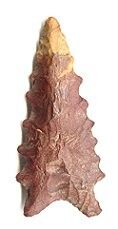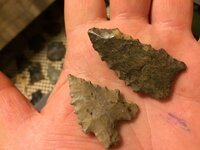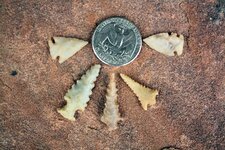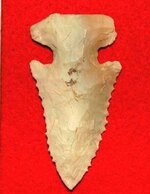monsterrack
Silver Member
- Apr 15, 2013
- 4,419
- 5,815
- Detector(s) used
- Garrett, and Whites
- Primary Interest:
- All Treasure Hunting
I have always had my on opinion on serated points. Some believe they were for better cutting, like for a spear or knife. I don't think that is correct, I believe that they were tools made to help strip plant fiber down to use for rope and twine maybe to strip thin leather down for twine. I stand on this thought because there is no sharper edge than a fresh chip stone and if used on a tool to try an enter animal flesh the serrations would drag causing the point not to penetrate as deep. I would like to hear other members thoughts on this type of point.


Amazon Forum Fav 👍
Upvote
0








